What's New
Displaying results 3811 - 3820 of 4052
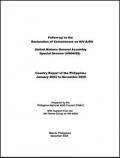
Resource | Publications,
For the past decade, the HIV situation in the Philippines has been described as "low and slow," indicating low prevalence rates and slow spread of the infection even among those regarded as most-at- risk populations (classified as "high risk groups"- HRG - in the surveillance surveys).
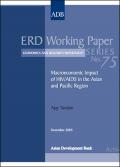
Resource | Publications,
This paper reports estimates of the economic impact of HIV/AIDS in the Asian and Pacific region using a standard growth model. Following previous research on this issue, an economy wide aggregate production function is estimated with health capital as an input. HIV/AIDS is assumed to influence the accumulation of health capital proxied by a life expectancy shortfall measure. The model is estimated empirically using cross-country panel data spanning the period 1960–2000. Using a global sample, results indicate a negative impact of increasing HIV/AIDS prevalence on health capital and on economic growth. Using fairly conservative projections for HIV/AIDS prevalence, the model predicts a particularly large adverse impact on economic growth in Cambodia and Papua New Guinea.
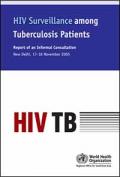
Resource | Publications,
In most countries, TB patients are increasingly being detected but the majority of HIV cases are not. The current knowledge of the interaction between the epidemics in the Region is restricted to those who access health services and are diagnosed with either disease.
In order to address Region-specific issues in this area reflecting the current epidemiological situation and the status and capacity for delivering the necessary services in the countries, there has been a call from Member Countries in the Region to conduct a technical forum and to outline regional strategic directions for HIV surveillance among TB patients. WHO/SEARO has responded to this need by organizing an informal consultation of selected programme managers and experts, including those from countries in the Region that are facing a generalized or concentrated HIV epidemic.
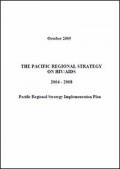
The Pacific Regional Strategy on HIV/AIDS (2004-2008): Pacific Regional Strategy Implementation Plan
Resource | Publications,
The Pacific Regional Strategy on HIV/AIDS (2004-2008) is designed to support national efforts to prevent and control HIV/AIDS and to strengthen work at the regional level through improved coordination, collaboration and partnership between regional organizations and national programmes.
The goal of the strategy is a broad regional goal to which all HIV/AIDS prevention and care activities in the region contribute. It was endorsed by regional leaders at the 35th Pacific Islands Forum meeting held in Apia, Samoa, on 8 August 2004. In endorsing the five-year regional strategy, the Pacific leaders recognized the urgent need to effectively address HIV/AIDS in the region, and therefore tasked the Secretariat of the Pacific Community (SPC) with developing a detailed implementation plan for the Strategy.

Resource | Presentations,
This is a presentation regarding the current Situation of HIV/AIDS in Malaysia, presented by the Center for Multidisciplinary Studies on Health and Development Inc last October 2-8, 2005.
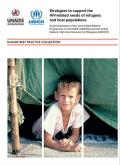
Resource | Publications,
The ongoing plight of refugees and displaced people worldwide is one of today’s great tragedies. In 2005, the global number of refugees and displaced people rose by 13% to 19.2 million people. Over four million of these refugees and other displaced people live in sub- Saharan Africa.
In this study, UNHCR and UNAIDS seek to inform and support key decision-makers on HIV-related issues facing refugees, other populations of concern to UNHCR, and the populations of host countries. The content of this document focuses on sub-Saharan Africa, but the concepts discussed are applicable to refugee situations outside this region.
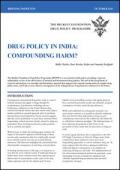
Resource | Publications,
Contemporary international drug policy seeks to control both the demand and supply of drugs through the criminalisation of production, trafficking and use. Furthermore, adherence to the United Nations drug control conventions ensures that most nation states adopt a similar prohibition-oriented approach when formulating national drug control legislation. Recent research suggests that this can be problematic in some Asian countries where longstanding cultural sanctions already existed for drug use; particularly those involving psychoactive plant products such as cannabis and opium.
With its focus on India, this briefing paper examines the impact of the punitive approach towards drugs in those societies and communities that have traditionally exerted socio-cultural controls over the use of mind-altering substances. The discussion highlights the unintentional but often harmful consequences of such drug control policies.
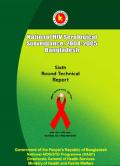
Resource | Publications,
Bangladesh has carried out serological surveillance annually since 1998 and from the very beginning has recorded the highest HIV rates in injection drug users in Central city A. This rate has been steadily rising over the years and now, during the 6th round, it is at 4.9%. The geographical coverage of injection drug users in surveillance has increased dramatically over the rounds, with only one city being covered in the 1st round to 17 cities in the 6th round.
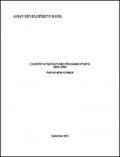
Resource | Publications,
With the overarching objective of reducing poverty, the Asian Development Bank (ADB) strategy for Papua New Guinea (PNG) focuses on strengthening governance, supporting private sector development, and improving social conditions. PNG displays characteristics of ADB’s Weakly Performing Developing Member Countries, underlying the difficult operating environment for ADB and other development partners. Weak public sector management and ineffective public services remain the main development problems. ADB's short-term priorities will be: consolidation (focusing on relationships with the Government and development partners), policy dialogue in key sectors, administration and implementation of existing projects and very selective identification of operations to deliver clear results. Based on lessons learned, e.g., in supporting private sector development, ADB will explore alternative channels for the delivery of assistance to achieve development objectives.
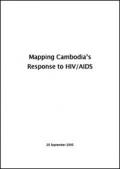
Resource | Publications,
Since the first HIV and AIDS cases in the country were identified in 1991 and 1994 respectively, steps to curb the spread of HIV/AIDS have been immediate. Government ministries, primarily the Ministry of Health (MoH) and several Non-Government Organisations (NGOs), initiated programs and projects to raise awareness and educate various population groups. Several structural changes took place to expand the scope of the response. Specifically, the National AIDS Program of the Ministry of Health was reconstituted and expanded into the National Centre for HIV/AIDS, Dermatology and STDs, and a National AIDS Authority was created with a mandate for ensuring that the response expanded beyond the health sector to a multi-sectoral approach. This approach was reflected in the first National Strategic Plan for a Comprehensive and Multisectoral Response to HIV/AIDS.
The current plan runs through the end of 2005 and has been reviewed as part of the process of developing the draft plan for the period 2006-2010. To guide programme planners and donors in implementing the new plan, an inventory of the HIV/AIDS response under the term of the previous plan was undertaken.





